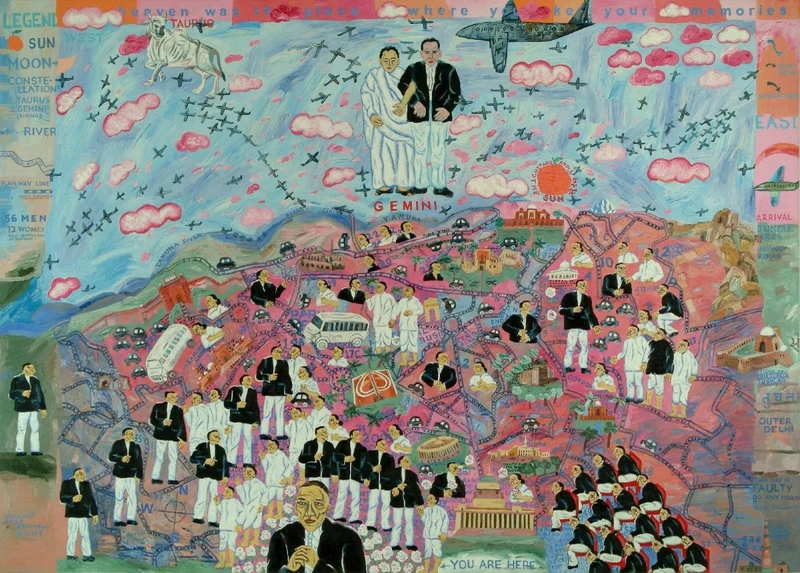Arpita Singh
13 Mar-27 Jul 2025


Serpentine presents the first solo exhibition of Arpita Singh outside India, featuring key works selected in close collaboration with the artist from her prolific career spanning more than six decades.
Singh's paintings draw on Indian miniatures and narratives, interwoven with immediate experiences of social upheaval and international humanitarian crises. Remembering at Serpentine North will explore the full breadth of her practice, ranging from large-scale oil paintings to more intimate watercolours and ink drawings.
Born in Kolkota in 1937, Singh emerged in the 1960s, developing a painting practice that blends figuration and Surrealism, drawing inspiration from miniaturist painting and Bengali folk art. She combined this with periods of abstraction, using pen, ink and pastels to form dynamic lines and perforations on the surface to create layers and textures. From the 1990s, Singh increasingly explored themes of gender, motherhood, feminine sensuality and vulnerability, alongside metaphors of violence and political unrest in India and internationally. Singh resists singular interpretation, explaining, ‘I know that when the work grows the starting point melts, references become signals to lead anybody or everybody to the desired place. I don't remember myself, the frame breaks and I, the woman, stand there as anybody, as everybody.’
The exhibition builds on Serpentine’s legacy of spotlighting the work of pioneering artists who have not yet received the recognition they deserve in London. Past exhibitions include Faith Ringgold, Luchita Hurtado, James Barnor, and most recently, Barbara Chase-Riboud. To accompany the exhibition, Serpentine will publish a new catalogue, commissioning key authors, thinkers and other creatives to highlight Singh’s significant role in contemporary international art and her influence across generations and disciplines. The culmination of extensive research across India, Indian Highways was presented at Serpentine South in 2008 – 2009 as a snapshot of a vibrant generation of artists working across a range of media. Arpita Singh’s work was first encountered during the research for this show.